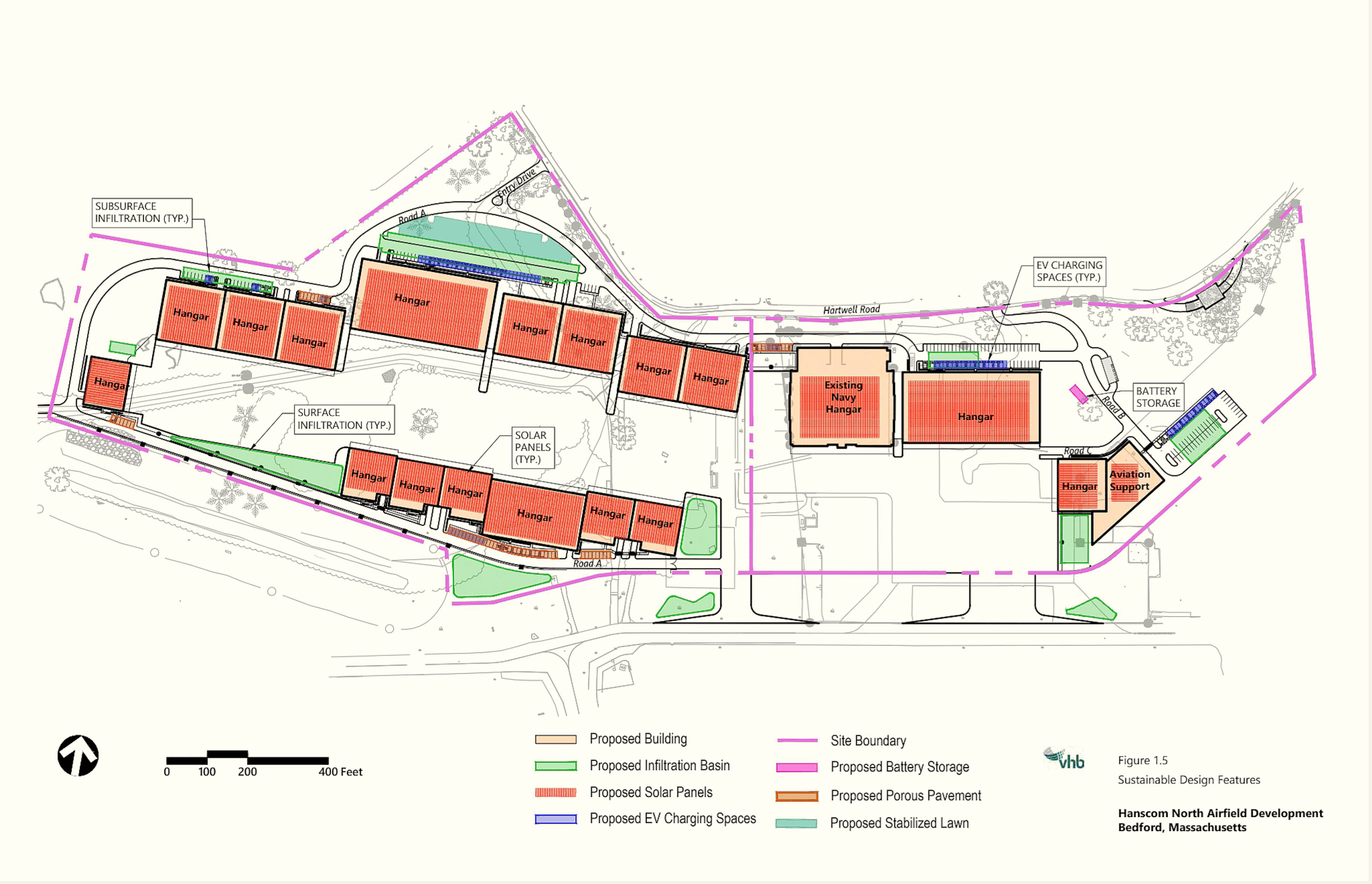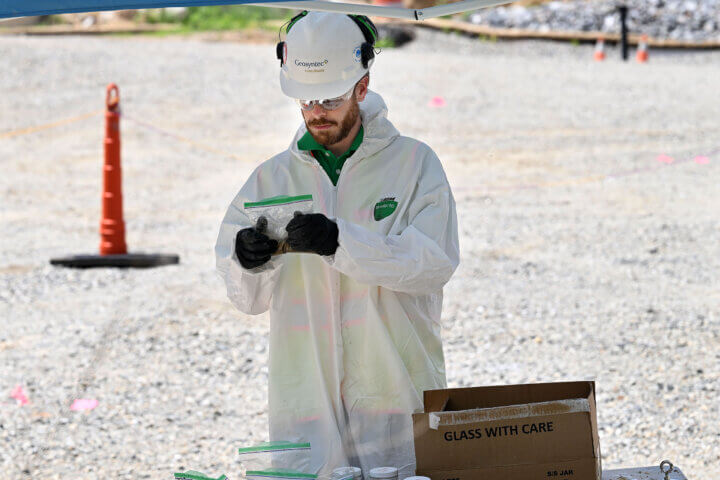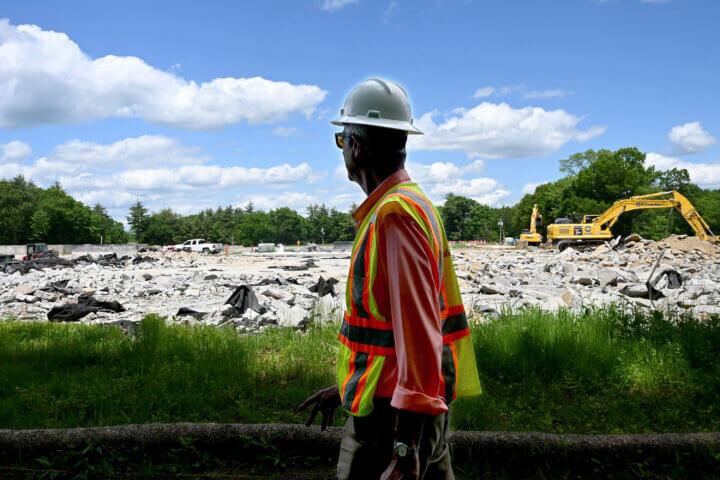By Anne O’Connor — Correspondent
New details on a plan to dramatically increase hangar space and support facilities at Hanscom Airfield are finally in circulation.
A copy of the Draft Environmental Impact Report shared with The Concord Bridge Tuesday describes a 47-acre development with 17 new hangars, adding 395,700 square feet for aircraft parking and storage, and the renovation of an existing historical Navy hangar.
Fuel tanks, a standalone aviation support space, taxiways, changes to curb cuts and an additional 240 vehicle parking spaces are part of the plan proposed by North Airfield Ventures, LLC, and Runway Realty Ventures, LLC.
The planned number of new hangars dropped from 26 to 17 from the initial 2023 filing with the Massachusetts Environmental Policy Office, but the total square footage is about the same.
The proposal addresses current and projected business needs and does not expand runway or flight capacity, the proponents said in the report. The expansion will allow more planes to stay on the ground at Hanscom instead of being “ferried” or flown empty to or from the airport because there’s no hangar space.
The report touts the use of solar panels, electric vehicle chargers, and planned capacity to accommodate electric aircraft and sustainable aviation fuels.
“The Project will be designed and constructed as an innovative example of sustainable development, with clean and efficient energy at its core,” the draft states.
Despite such assurances, not everyone greeted the draft with enthusiasm.
“This project, which nearly doubles luxury-jet hangar capacity and will dispense 5 million gallons of jet fuel per year, will greatly increase greenhouse gas emissions, adding emissions comparable in scale to those generated by the entire town of Concord,” Neil Rasmussen, president of Save our Heritage, a Concord-based group opposing the expansion, said in an email.
“This insulting report completely avoids this issue despite having been required to report about it.”
In a separate email exchange, Hanscom Field Advisory Committee Chair Christopher Eliot called the DEIR “fundamentally flawed.”
Based on his information, ferry flights are less numerous than the report found, and the number of flights and associated noise and emissions will increase.
Eliot said the hangar project was not discussed during a June 2021 meeting of HFAC, as stated in the draft. There were just a few lines in a project report about a land swap.
“We did not know the land swap was part of this much larger project,” he wrote.
He questioned how traffic could not increase if Hanscom, a designated reliever airport, absorbs flights from Logan. The report also specifies an additional 15,000 gallons of fuel will be delivered to Hanscom weekly.
This additional fuel will end up in the atmosphere as greenhouse gases despite claims the project is carbon neutral, he wrote.
The developers plan to begin phase one in spring 2025 and complete the project in late 2027.
Once the DEIR appears in the MEPA Environmental Monitor, probably on March 22, a public comment period will open. The developers asked that the usual 30-day period be extended by 14 business days.
Information will be available at https://www.mass.gov/info-details/submitting-comments. People can also contact the MEPA analyst at alexander.strysky@mass.gov.






